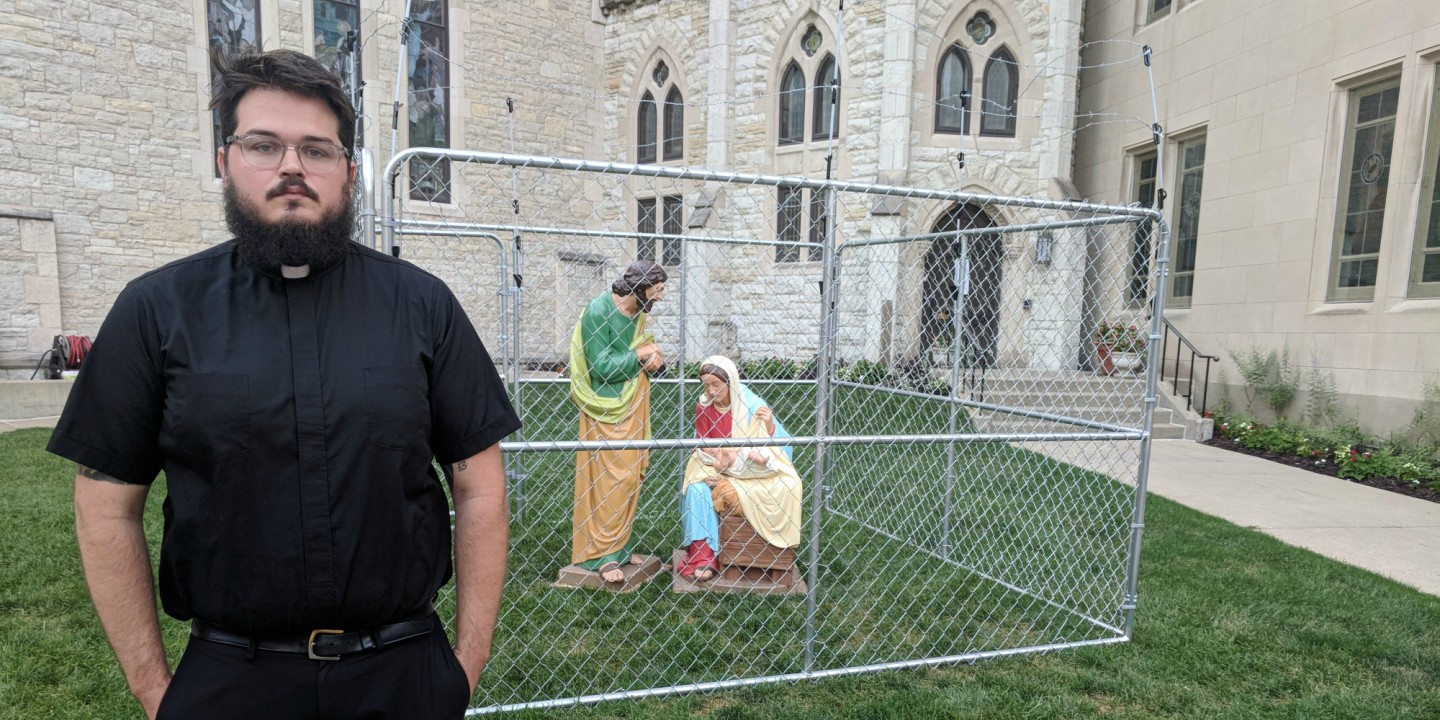Church's Nativity scene protests family detention
Christ Church Cathedral in Indianapolis has statues of Jesus, Mary, and Joseph behind a chain-link fence topped with barbed wire.

The Episcopal cathedral of Indianapolis brought its Nativity statues of the baby Jesus, Mary, and Joseph, onto its lawn early this year.
In early July, Christ Church Cathedral also put together a cage made of a chain-link fence topped with barbed wire and placed the holy family inside of it.
The downtown Indianapolis church, which is the seat of the diocese including 9,000 members across the southern two-thirds of Indiana, did it as a protest of the Trump administration’s zero-tolerance policy, said Stephen Carlsen, dean and rector of Christ Church Cathedral. The policy has resulted in holding families arrested near the U.S.-Mexico border in detention centers.
Lee Curtis, one of the clergy serving at the cathedral, came up with the idea for the demonstration, citing Matt. 2:13–14 as the holy family being refugees seeking asylum in Egypt.
“This holy family is every family, and every family is holy,” he said.
Advocacy for immigrants springs from the church’s diverse congregation, Carlsen said.
“This is an easy one for us,” said Carlsen, a member of the Faith in Indiana group that advocates for immigrants. “It doesn’t feel like we're out campaigning. This is about people I know and love, and I’m going to stand with them.”
Mark Reckart, a member of the congregation, said is proud of his church protesting families being detained after crossing the U.S. border.
“It’s a perfect way to show what's happening: it’s families in cages,” Reckart said.
Fred Andrews, a sexton at Christ Church Cathedral, said he hopes the demonstration reminds people to vote in the next election.
“Somewhere along the line,” Andrews said, the fact that people coming to the U.S. are “just hoping for a better life has been lost.”
People walking by said the display was a powerful way to bring awareness to the situation at the border.
“I think it’s bold,” said Matthew Roberts of Indianapolis. “It just makes me think about those families that are separated and pray for them.”
Aija Evonen, a visitor from Finland, also appreciated the protest.
“They were one of the first refugees,” she said of the holy family.
[In late June, Parkside Community Church in Sacramento, California, constructed a similar display with chicken wire, zip ties, and wood, except with the statues of Mary and Joseph separated from the baby Jesus. The church said it would continue to have the display on its lawn until all immigrant children are reunited with their parents. Bonnie Rambob, co-pastor of the United Church of Christ congregation, told a local news station that the protest was also “a theological imagination exercise to help us imagine what would it be like for our own holy family to be in this situation.”] —USA Today
A version of this article, which was edited August 2, appears in the print edition.





